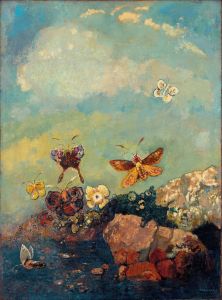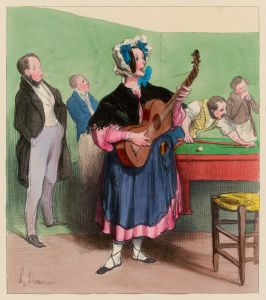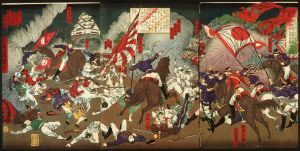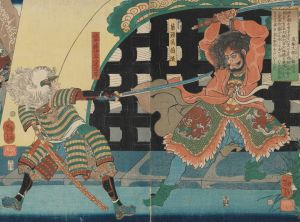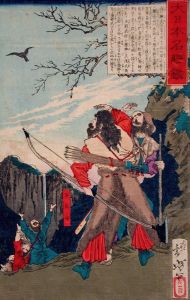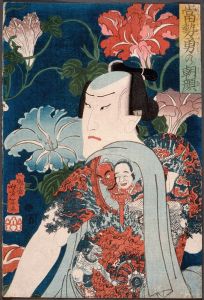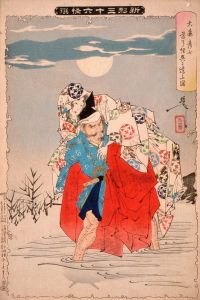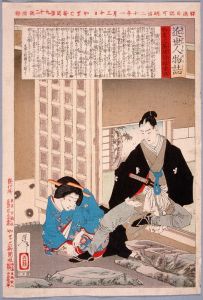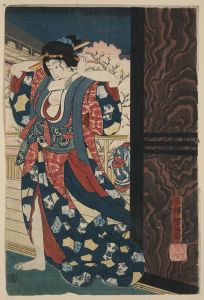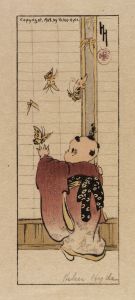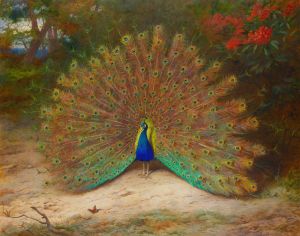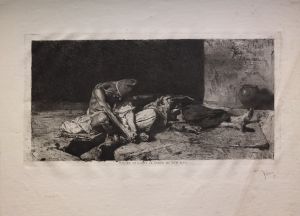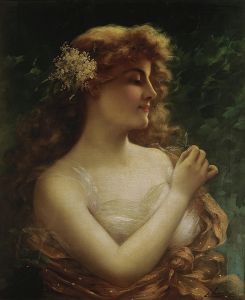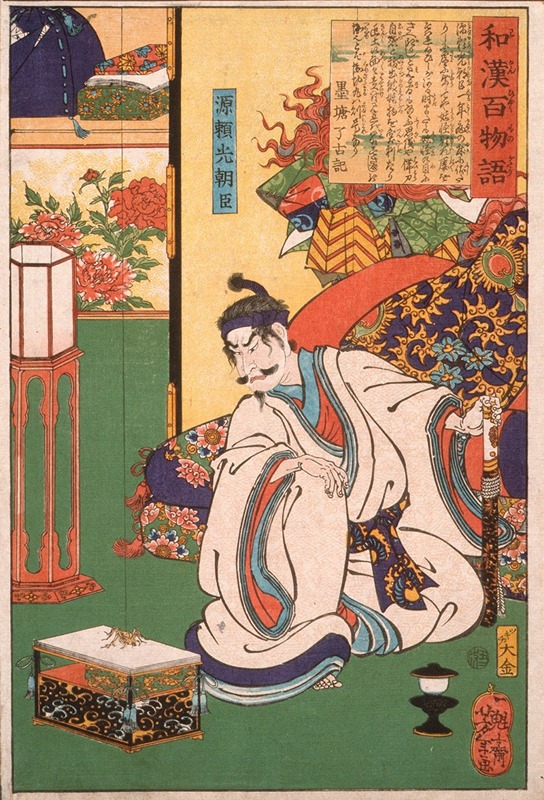
Minamoto Yorimitsu Ason Watching a Spider
A hand-painted replica of Tsukioka Yoshitoshi’s masterpiece Minamoto Yorimitsu Ason Watching a Spider, meticulously crafted by professional artists to capture the true essence of the original. Each piece is created with museum-quality canvas and rare mineral pigments, carefully painted by experienced artists with delicate brushstrokes and rich, layered colors to perfectly recreate the texture of the original artwork. Unlike machine-printed reproductions, this hand-painted version brings the painting to life, infused with the artist’s emotions and skill in every stroke. Whether for personal collection or home decoration, it instantly elevates the artistic atmosphere of any space.
"Minamoto Yorimitsu Ason Watching a Spider" is a woodblock print by the renowned Japanese artist Tsukioka Yoshitoshi. Yoshitoshi, who lived from 1839 to 1892, is celebrated for his innovative approach to ukiyo-e, a genre of Japanese art that flourished from the 17th through 19th centuries. This particular print is part of Yoshitoshi's series "New Forms of Thirty-Six Ghosts" (Shinkei Sanjūrokkaisen), which was published between 1889 and 1892. The series is known for its imaginative depictions of supernatural themes, drawing from Japanese folklore, legends, and historical tales.
The subject of the print, Minamoto Yorimitsu, also known as Minamoto no Raikō, was a historical figure from the Heian period (794-1185) in Japan. He was a samurai and a member of the Minamoto clan, which played a significant role in Japanese history. Yorimitsu is often associated with various legends and tales, particularly those involving his loyal retainers, the Four Guardian Kings (Shitennō), who were famous for their bravery and martial prowess.
In the print, Yorimitsu is depicted observing a spider, an image that is rich with symbolic meaning in Japanese culture. Spiders are often associated with mystery and the supernatural, and they frequently appear in folklore as creatures capable of both benevolent and malevolent acts. The scene likely references a specific legend involving Yorimitsu and a spider, although the exact story can vary. One popular tale involves Yorimitsu being attacked by a giant spider, which he ultimately defeats, showcasing his courage and strength.
Yoshitoshi's work is characterized by its dynamic composition and expressive use of color and line. In "Minamoto Yorimitsu Ason Watching a Spider," these elements come together to create a sense of tension and intrigue. The print captures a moment of quiet observation, yet the presence of the spider hints at an underlying threat or challenge. This duality is a common theme in Yoshitoshi's ghost series, where the boundary between the real and the supernatural is often blurred.
Yoshitoshi's "New Forms of Thirty-Six Ghosts" series is notable for its departure from traditional ukiyo-e themes, incorporating more psychological and emotional depth. This reflects a broader trend in late 19th-century Japanese art, as artists began to explore new subjects and techniques in response to the changing cultural landscape of the Meiji era. Yoshitoshi, in particular, is credited with revitalizing the ukiyo-e tradition during a time when it was in decline, and his work continues to be celebrated for its artistic and historical significance.
"Minamoto Yorimitsu Ason Watching a Spider" exemplifies Yoshitoshi's ability to blend historical narrative with imaginative storytelling, creating a work that is both visually striking and rich in cultural meaning. The print remains an important example of Yoshitoshi's contribution to Japanese art and his enduring legacy as one of the last great masters of the ukiyo-e tradition.





